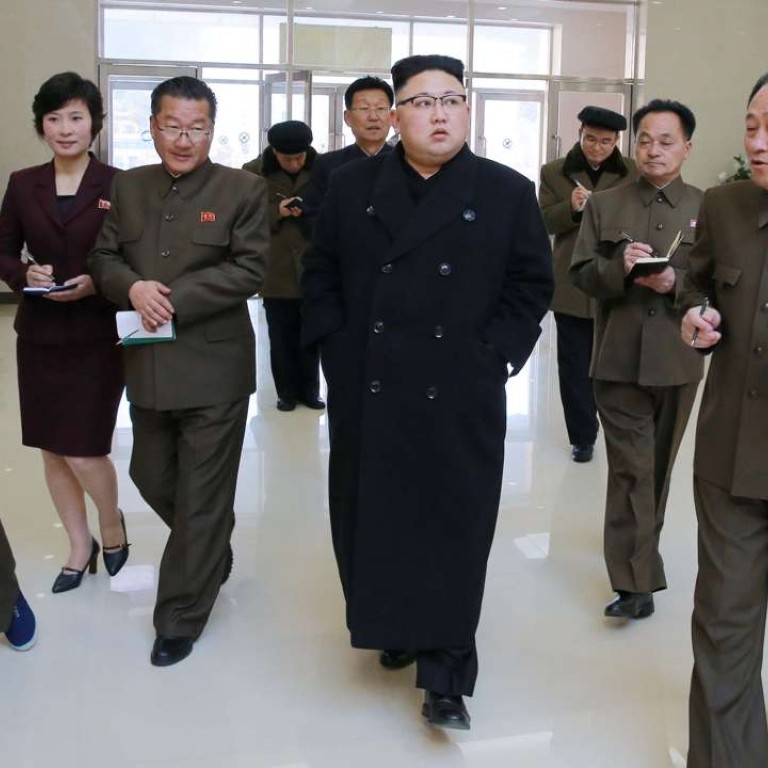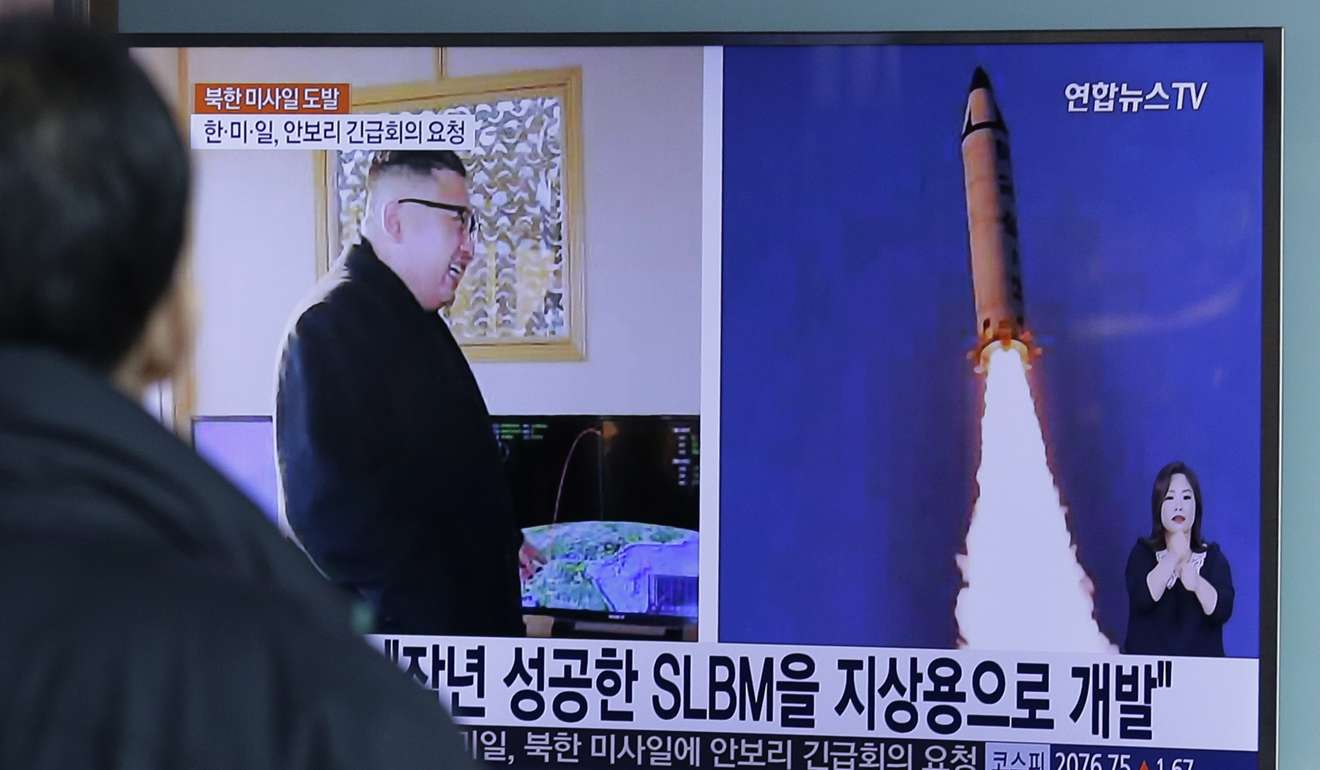
‘It adds to our tremendous might’: North Korea celebrates successful test of new ballistic missile
South Korea’s acting president Hwang Kyo-ahn vowed a “corresponding punishment” in response to the launch
North Korea said on Monday it had successfully tested a new ballistic missile, triggering a US-led call for an urgent UN Security Council meeting after a launch seen as a challenge to US President Donald Trump.
The North’s leader Kim Jong-un “expressed great satisfaction over the possession of another powerful nuclear attack means which adds to the tremendous might of the country”, state news agency KCNA said.
They leave little warning time and therefore pose greater threat to opponents
The missile was launched on Sunday near the western city of Kusong and flew east about 500km before falling into the Sea of Japan (East Sea), South Korea’s defence ministry has said.
Photos released by KCNA showed the missile blasting into the sky with a smiling Kim watching from the command centre, and standing on the launch field surrounded by dozens of cheering soldiers and scientists.
It said Kim “personally guided” preparations for Sunday’s test, which it described as a surface-to-surface medium long-range Pukguksong-2, a “Korean-style new type strategic weapon system”.
KCNA said the missile was powered by a solid-fuel engine – which requires a far shorter refuelling time than conventional liquid fuel-powered missiles, according to Yun Duk-min of the state-run Institute for Foreign Affairs and Security in Seoul.
“They leave little warning time and therefore pose greater threat to opponents,” he said, adding that such missiles are harder to detect before launch by satellite surveillance.
The North has previously made claims for its weapons capabilities that analysts consider unconvincing. But Seoul’s military confirmed the North’s claim on the solid-fuel engine, suggesting progress in its capabilities.
Pyongyang’s latest announcement was the first time a Pukguksong-2 has been mentioned, although last August it test-fired what it said was a submarine-launched ballistic missile (SLBM) marked as a Pukguksong-1, a name which translates as “North Star”.
Kim said at the time that the missile, which was launched towards Japan, put the US mainland and the Pacific within striking range.
An official with the South Korean military’s Joint Chiefs of Staff told reporters the Pukguksong-2 appeared to have been fired based on the same “cold launch” technology used in last year’s SLBM test.
The method – in which a missile is initially propelled by compressed gas before its engine ignites mid-air – is considered safer and easier to hide its original launch location.

North Korea claims it has developed an intercontinental ballistic missile (ICBM) capable of hitting the US mainland but it has not tested one as yet.
The longest-range missile it has tested is the intermediate Musudan which is theoretically capable of reaching US bases on Guam, but most have ended in failure including one last October which exploded shortly after launch.
The South has said that Sunday’s launch was designed as a test for Trump, who responded to the provocation by pledging “100 per cent” support for Washington’s key regional ally Japan.
“Today’s missile launch ... is aimed at drawing global attention to the North by boasting its nuclear and missile capabilities”, Seoul’s defence ministry said on Sunday.
It was an armed provocation to test the response from the new US administration under President Trump
“It is also believed that it was an armed provocation to test the response from the new US administration under President Trump.”
The US, Japan and South Korea responded to the North’s confirmation by requesting an urgent UN Security Council meeting to discuss the launch. The council was expected to hold consultations on Monday.
Japanese Prime Minister Shinzo Abe, whose country would be in range of a hostile North Korean missile launch, called the test “absolutely intolerable” during an impromptu press conference with Trump in Florida on Sunday.
North Korea is barred under UN resolutions from any use of ballistic missile technology. But six sets of UN sanctions since Pyongyang’s first nuclear test in 2006 have failed to halt its drive for what it insists are defensive weapons.
Last year the country conducted two nuclear tests and numerous missile launches in its quest to develop a nuclear weapons system capable of hitting the US mainland.
South Korea’s acting president Hwang Kyo-ahn vowed a “corresponding punishment” in response to the launch, which came on the heels of a visit to Seoul by US Defence Secretary James Mattis this month.
Mattis had warned Pyongyang that any nuclear attack would be met with an “effective and overwhelming” response.
Joel Wit, a senior fellow at the US-Korea Institute at Johns Hopkins University, said that nevertheless more provocations were likely.
“There is certainly more coming in response to [US-South Korea] exercises openly advertised to decapitating the North Korean regime and that may include overflights of long-range nuclear-capable bombers,” he said on Twitter.

.png?itok=arIb17P0)